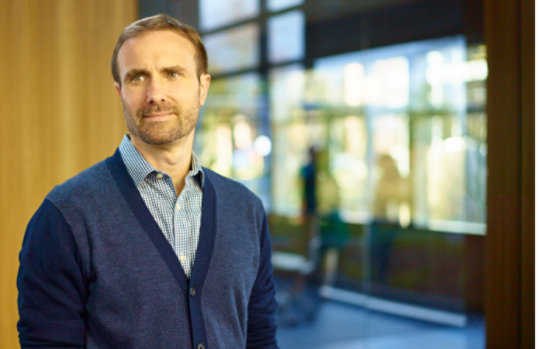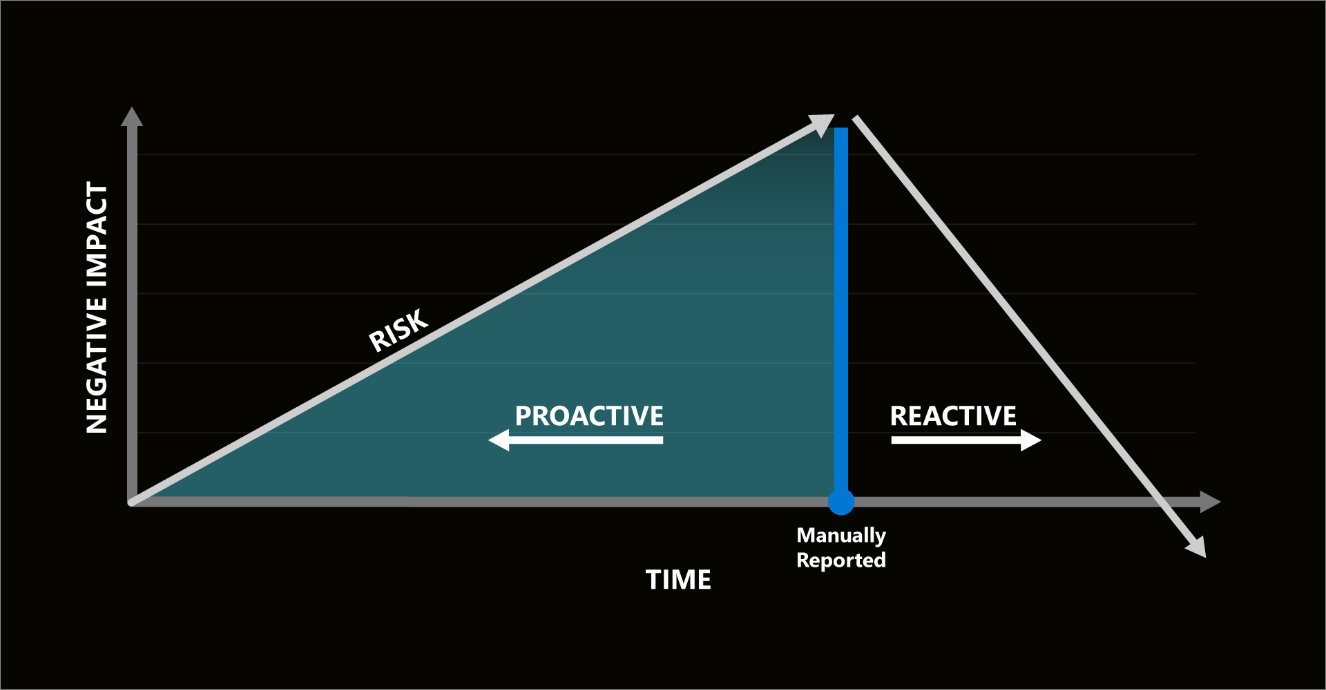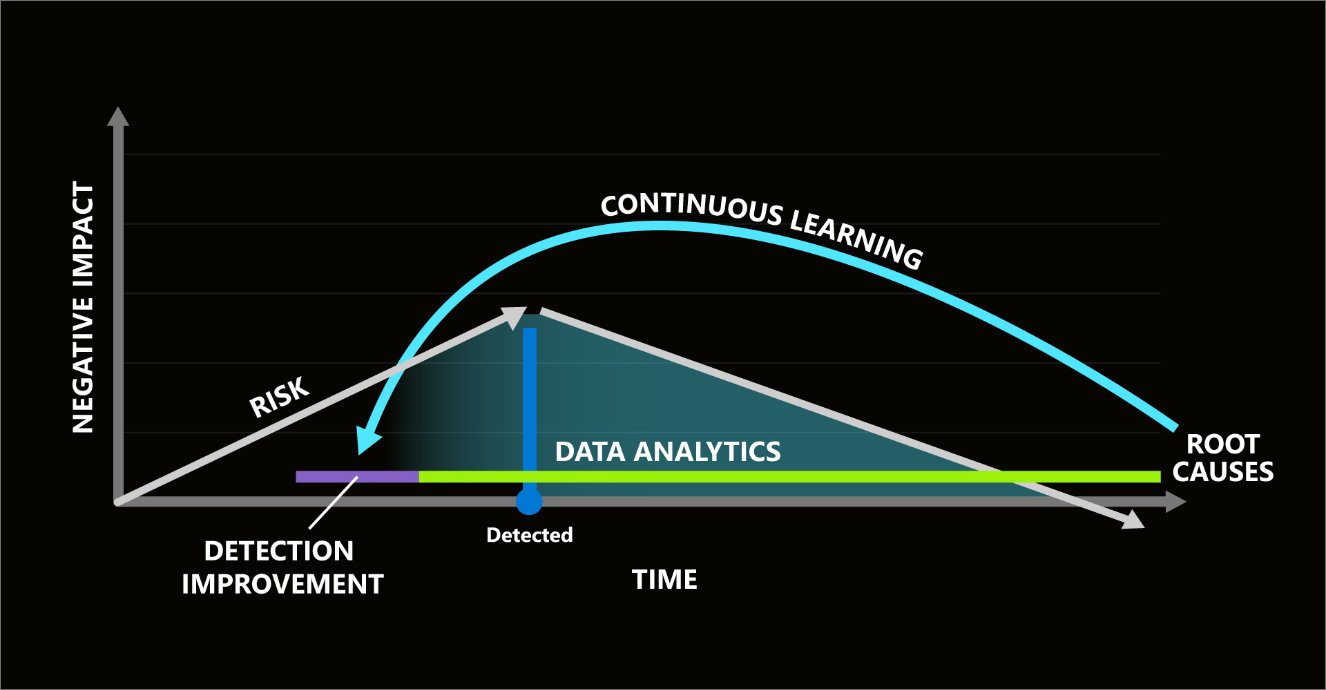Shortening the risk lifecycle

In its effort to mobilize the power of data to bend the curve of corruption, Microsoft ACTS is partnering with governments, NGOs, the private sector, and citizens.
“The idea that underlies a lot of what we’re trying to do with ACTS - and the journey I’m on more broadly - is figuring out how to use data and analytics to shorten the risk lifecycle,” says Chris Nelson, associate general counsel, Proactive Risk Engagement for Microsoft’s Corporate, External and Legal Affairs (CELA).

Figure 1 Above: The negative impact of a risk increases quickly and disproportionately with time.
“Risks have compounding negative returns,” Nelson says. “The amount of effort it takes to mitigate a risk - the cost to investigate, remedy, and control the risk - goes up quickly as the risk matures. If you wait twice as long to deal with it, you have to work four times as hard to fix it.”
Nelson leads the Compliance Analytics Program for CELA, and his mission is to develop and support proactive approaches to risk management. Partnering with other compliance teams, Nelson’s team uses data, statistical analysis, and machine learning models to help Microsoft make faster, more accurate decisions about risk. Nelson brings this same expertise and passion to Microsoft ACTS.
Shared success in the fight against bad actors
Something Microsoft and governments have in common is that many risks are identified late in their lifecycle, typically after someone has raised the alarm. This means that most enforcement and mitigation work is geared to be reactive, including investigations, audits, and whistleblower or leniency programs. Reactive work is critical, but it’s just one piece of the puzzle. Nelson’s team works the proactive side of the risk curve.
“Time to detection is critical,” Nelson says. “Risks tend to be serial, in the sense that they follow a characteristic, predictable pattern. Reactive work is a critical lead - it can be your first look at the landscape. Not following that lead with data, analytics, and proactive work almost guarantees that you aren’t gaining ground on that risk, which means you aren’t minimizing future losses.”
Of course, early detection is about more than just reducing negative impact. It’s also about stopping future corruption.
“If you’re paying close enough attention to risks, you start to understand how they form. It happens when the right mix of motivation, opportunity, and culture collide,” Nelson says. “And if you are diligent and open-minded, sometimes you can leverage your understanding to uncover root causes. That’s the first step towards true risk elimination.”
Identifying root causes empowers you to change your ambient environment, to alter the conditions that lead to the risk. This can be a big factor for governments looking to create real change. “Once you see the power of early detection and remediation, fueled by technology and a proactive mindset, you feel compelled to help other people do the same thing,” Nelson says.
“With ACTS we’re trying to share the lessons we’ve learned, and the art of the possible, with governments. We want to show them how to use technology to shorten the lifecycle of corruption and, ultimately, end it.”
“With ACTS we’re trying to share the lessons we’ve learned, and the art of the possible, with governments. We want to show them how to use technology to shorten the lifecycle of corruption and, ultimately, end it.”
Chris Nelson
Associate general counsel, Proactive Risk Engagement for Microsoft's CELA
Shining a light with analytics
The Microsoft ACTS team knows that technology can play a vital role in countering corruption across its lifecycle.
“But if there is a leading role for technology, right now, it’s advanced analytics - it’s data science,” Nelson says. “Analytics are a kind of compass, or like an extra sense. They can tell you where to look, what to look at, and how to spend scarce resources.”
With ACTS, Microsoft hopes to arm governments with the technology-sense they need to do just that - detect corruption earlier and catch bad actors who go to great lengths to cover their actions.
Microsoft knows that this is going to be a long fight, but it’s ready. According to Nelson, that’s the great thing about technology and why it’s the heart of the Microsoft ACTS program - technology has the speed and flexibility to change the rules of the game. And corruption is a very old game. Microsoft ACTS is attempting to bend that long curve of corruption by looking for ways to change the dynamic between enforcers and bad actors by applying technology. That doesn’t mean one-size-fits-all - not even close. Microsoft created ACTS to meet governments where they are, to work locally, and to operate with a growth mindset.
“Humility and curiosity are our watchwords,” Nelson says. “Our ambition is to leverage technology to dramatically reduce the negative impacts of corruption. When we say ‘bend the curve,’ one of the things we mean is slowing and then stopping the negative compounding effects I mentioned earlier.”
The best way to do this, according to Nelson, is to make more investments on the proactive side of the corruption lifecycle. “The goal of ACTS is to reduce the costs of those investments via technology, to bend that cost curve down,” Nelson says.

Figure 2 Above: Once root causes are understood, it’s possible to apply those learnings to controls and practices, creating more opportunities for early detection.
Microsoft believes that once governments start using technology to fight corruption, they’ll find more and more ways to use it. “You quickly realize that technology serves as a bridge to understanding,” Nelson says. “The more of it you have, the stronger your bridge, and the deeper your understanding, will be.”
ACTS is Microsoft’s bet that the gains from technology will also compound - positively. “Predictive algorithms lead to faster remediation, which leads to more effective controls, which lead to a fuller understanding of root causes,” Nelson says. “And then you start over and get even more efficient in your next cycle.”
That’s the power of technology. That’s the power that Microsoft ACTS is striving to harness.
